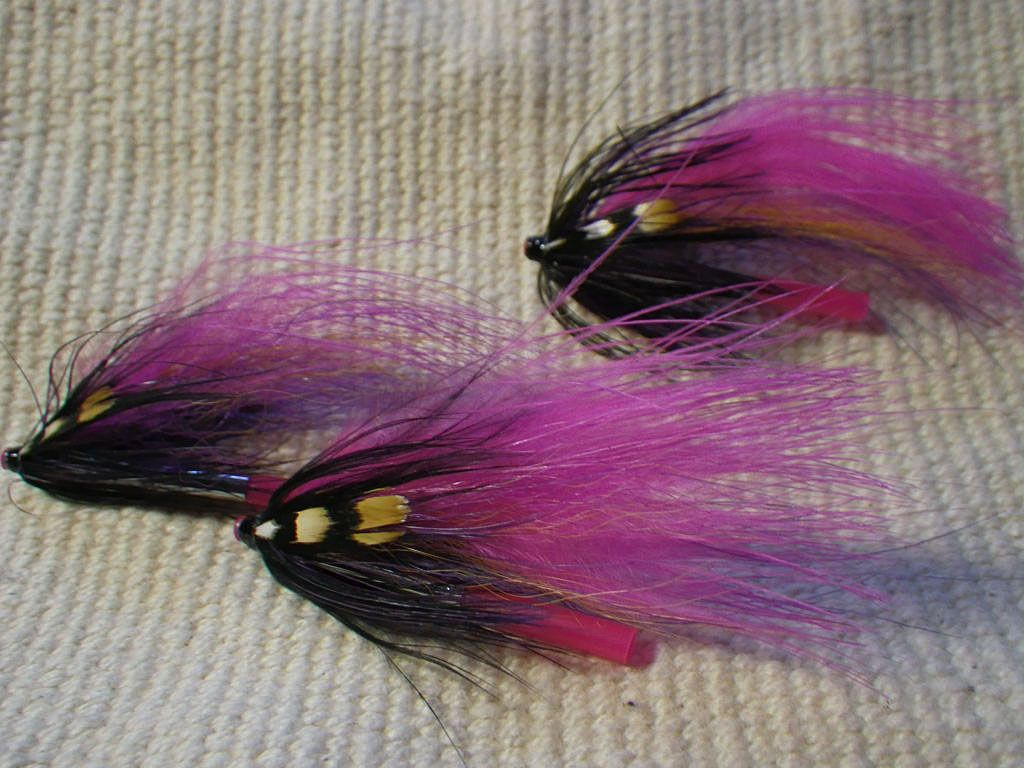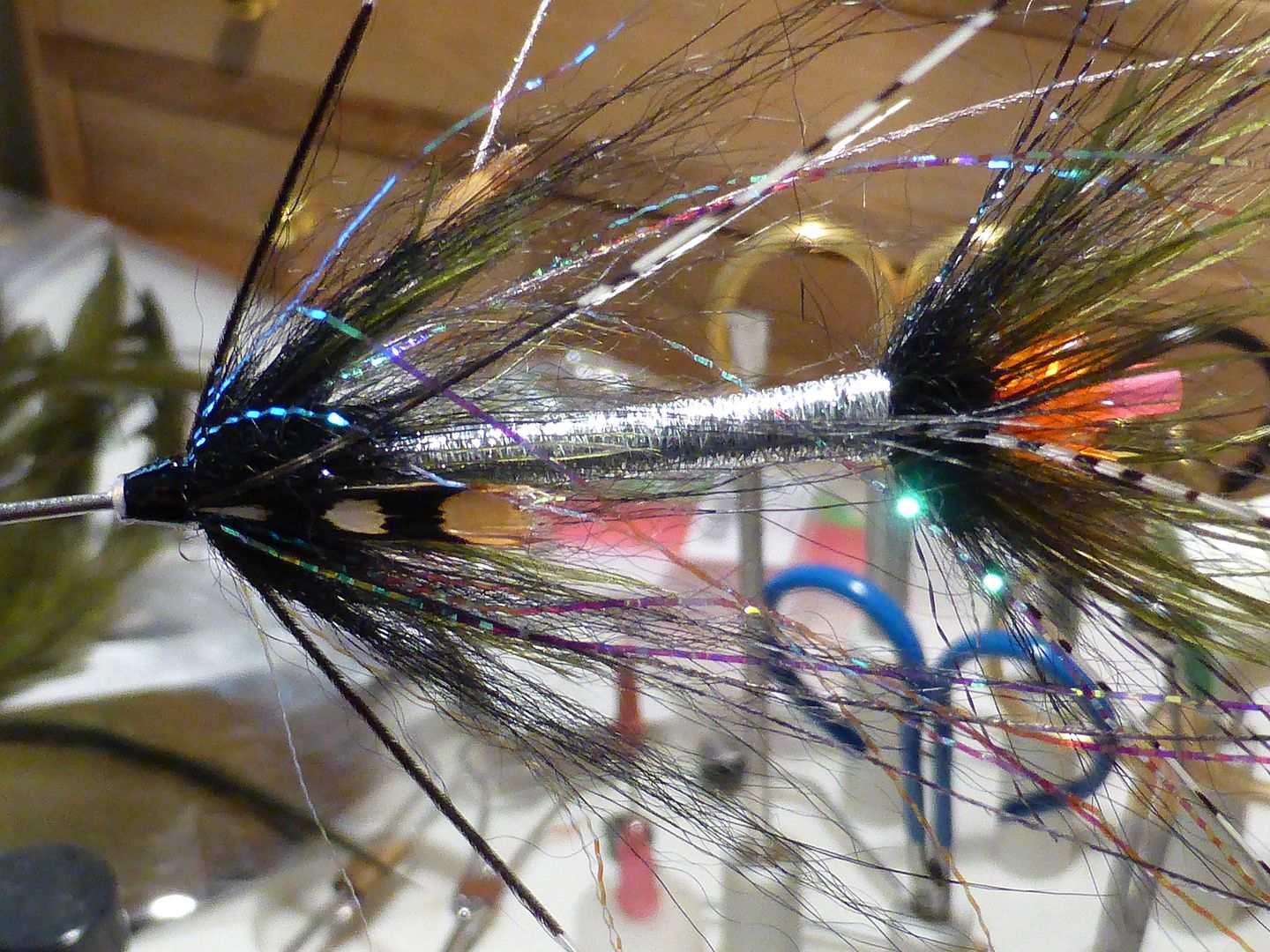Well said Ard. I think there are a couple of advantages that I mentioned in my previous comments but one that you touched on that I overlooked is that tying in the round eliminates the question of: "is my fly riding right?" Thanks for brining that up.
Like you, tubes were something I gained interest in because I was looking for something different at the vise. I enjoy fishing streamers and tubes are an ideal match for tying them. What I like about tying in the round is that there are no rules per say. It's just sort of free style for me. The inspiration of the second fly I showed was my adaptation of Ard's Nine Three. Looking at his pattern, I just used colors to match as best I could imagine and it turned out as you see it.
You can get into it relatively cheap if you want to, but like Ard mentioned, you'll end up dropping some cash on materials. You probably already have various dubbing, deer hair, marabou, flash materials and that's a good start. The things I had to add were tubes, tube adaptor, schlappen, Arctic Fox, Guinea feathers, Rhea and Amherst tails. I think if you have those things in various colors you can do an awful lot. Arctic fox is my choice for hair because it swims wonderfully and doesn't collapse on itself in the current like a lot of softer materials, such as marabou will. That's not to say they don't have their place on a fly, but something to keep in mind.
Most of my ties are still done on traditional hooks, but this is something different and fun. It really has helped me develop my skills at the vise though. I mentioned in a recent thread about Quality of Marabou that it's helped me work with different materials, feather preparation and really has made me pay attention to proportions.
Last but not least, I fumbled with this on my own watching videos and looking at step by steps, but found that I really made progress once I took a class on tying them. Having the chance to sit down with somebody who's very skilled is a huge plus if you have that option.









